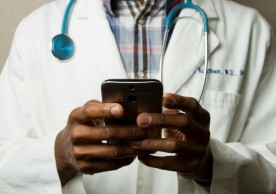
The EHR or Electronic Health Records is also referred to as EMR or Electronic Medical Records. The prime purpose of EHR is to utilize standardized formats to share patient data amongst healthcare providers. For increasing the interoperability and transportability of virtual health records, standardized forms simplify the process for both providers and patients.
But whether healthcare professionals endeavor to prepare for natural disasters such as hurricanes and human-made cybersecurity thefts (take data breaches and ransomware attacks, for instance), working on a disaster recovery strategy is predominant. And before a crisis occurs, healthcare IT providers must integrate some functional methodologies for EHR disruptions resulting from disasters.
Outlining Everything about HIPAA and Disaster Recovery Plans
Besides storing and handling patient data on the software platform, HIPAA compliance also shares information about healthcare insurance coverage and billing for patients. Thus, to ensure security, HIPAA requires medical professionals to implement contingency plans for disaster recovery, including emergency operations and data backup. With EHRs being the center attraction for patient's treatment, access to their medical information is crucial.
Additionally, it's a core responsibility for entities (irrespective of their sizes) to ensure uncompromised patient care during stages of downtime. Thus, besides knowing how to make an app HIPAA compliant, a clean data plan is also required for EHR security, and you can find the newest info aboit building HIPAA-compliant apps on the link. A comprehensive backup plan is also a federal requirement under the security rule of HIPAA; also, learn the steps to create a medical app here.
Ways How a Disaster Recovery Plan Can Aid Medical Providers
With the emergence of cybercrime attacks, covered entities remain vigilant in disaster recovery plans. It's critical to have suitable backups and to work with HIE or health information exchange. After all, it ensures that the normal operations may have a chance to continue in the disruption.
According to a set of surveys about the ransomware attack, files were encrypted and accessed by a ransomware variant. Due to the backups, it allowed restoring data and continued providing patients with aids. Given below are the benefits of disaster recovery planning.
Greater Retention
For patients, reliability and perfection in treatments are the most fundamental criteria. When the business fails at meeting expectations, customers (patient's family or the patient) move to a different healthcare service provider! DRP enables maintaining a premium quality service irrespective of the circumstances. Customers may get affected by the downtime heavily. Recusing the risk of data loss or downtime means clients are assured with adequate services even during the aftermath of a disaster.
An Insight into Scalability
Another prime thing is to identify innovative solutions when planning for disaster recovery. Technologies, including cloud-based backups and data storage, can simplify archive maintenance besides enhancing backups' efficacy and disaster recovery cost. Given the scalability of cloud-based solutions, they are more flexible than offsite data plans. DRP begins with a comprehensive survey where healthcare professionals get engaged in advanced strategies to uncover data storage services.
Increase Productivity Rate
A disaster recovery plan gets executed by the right people. When roles and responsibilities get assigned, productivity and effectiveness have more chances to increase. In multiple scenarios, it can have two people capable of the task. These types of redundancies prove to become incredibly advantageous in the future. When numerous healthcare professionals handle the task, organizations do not need to think about network integrity.
Healthcare organizations will never be able to avoid implementing a disaster recovery plan. It is true, especially with the cybersecurity dangers that continue to emerge. One holistic practice for cybersecurity includes prioritizing and assessing risk. It is crucial to prepare for various disaster types that can review potential risks.
Healthcare establishments should also conduct a thorough analysis to check the different options applicable to the requirements. It may be beneficial to stay updated about the state and federal requirements about contingency planning and backups. This way, entities become more efficient at handling adverse events.
The Last Call
The future of the healthcare industry is going to incorporate a sphere of versatile technological revolutions. And medical chatbots are just one example of it; learn more about healthcare chatbots creation from this website. As the future of this medical universe is getting more revolutionary, it's time that the healthcare providers work on DRP or Disaster Recovery Plan for EHR security.
* This is a contributed article and this content does not necessarily represent the views of mobilenapps.com
most read
more stories from RECOMMEND APPS & GAMES
-
10 Essential Apps Every Mom Needs to Simplify Life
Discover the ultimate arsenal of digital tools for modern moms! Explore this curated list of 10 essential smartphone apps designed to simplify parenting tasks, organizing schedules, tracking developmental milestones and discovering family-friendly activities.
ernest hamilton -
5 Innovative Educational Mobile Apps to Make Learning Fun
Discover 5 of the most downloaded and popular mobile apps that streamlines learning and make studying fun. Download now!
ernest hamilton -
Top 5 Sports Streaming Apps for iOS & Android: The Ultimate Guide for Sports Enthusiasts
Stay ahead in the game with the top 5 sports streaming apps for iOS & Android. Don't miss out on the action, download now!
ernest hamilton -
10 Entertaining Classic Offline Mobile Games for Data-Free Fun
Enjoy data-free fun with these 10 entertaining classic offline mobile games! Read the article to discover your new favorites.
ernest hamilton -
Top 8 Travel Apps: Navigation, Bookings, Places to Stay, and More
Here are the top 8 travel apps for seamless navigation, bookings, finding places to stay, and more. Happy travels!
ernest hamilton -
6 Exceptional Healthcare Apps You Need to Check Out: Medisafe Pill Minder, MySugr, Teladoc, and More
Discover top-notch healthcare apps for your needs! Explore now for a healthier you!
ernest hamilton -
Google-Backed Glance Launches Pilot of Android Lockscreen Platform in US
Check out the latest from Glance! They're piloting their Android Lockscreen Platform in the US. Don't miss it!
ernest hamilton -
Coachella 2024: From Paying, to Finding Music, Here Are 5 Apps You Need For The Festival
Prepare for Coachella 2024 with these 5 must-have apps, from payment solutions to music discovery. Enhance your festival experience now!
ernest hamilton













